How To Make Massage Soap Bars: Easy Recipe With Coffee

This simple DIY project turns basic melt and pour soap into luxurious homemade massage soap bars that smell like your favorite morning brew. Made using a suspension melt and pour soap base, my simple, easy-to-follow directions teach you how to whip up your own custom batch of scented massage soaps at home. The resulting skin care product massages and hydrates skin. While added coffee grounds provide gentle exfoliation. Make this easy homemade coffee soap for a spa day at home everyday! Or create them to give as beautiful DIY gifts for natural skin care.
DIY Massage Soap Bars
Make these DIY soap massage bars with coffee for a spa day experience at home! These massaging soaps are naturally scented with coffee absolute for an authentic coffee scent. They also contain real coffee grounds for gentle exfoliation to help you achieve naturally glowing skin.
These homemade soap massage bars are easy to make. Like hand milled soap and rebatch soap, these massaging soap bars are a great soap project for beginners. As they are formulated using a glycerin soap base, they can be created quickly and are ready for use the same day. This makes them an excellent choice for an everyday adult craft or even a DIY for a ladies’ craft night. The final bars also make great gifts for friends and family. Or recreate this recipe for an at home spa day!
Why Use Bar Soap?
I love using bar soap to cleanse my skin. Not only does it last longer than body wash, but there’s also no excess plastic waste from the containers needed to bottle body wash and liquid soap. While both liquid soap and bar soaps may have similar ingredients — true soap is comprised of fats and an alkali that go through saponification to become soap — bar soap is a greener, more eco-friendly option. It’s also why I formulated and use a solid dish soap recipe rather than bottled dishwashing liquid.
Soap bars, like my massaging bar soap recipe with coffee, are also easier to make than liquid soap or body wash. Especially if you are just learning how to make soap.
Like my other easy, melt and pour soap recipes for beginners, this DIY bath and beauty project uses a mold to create unique shapes. In this instance, I used a silicone massage soap mold. Being able to create soap shapes is unique to bar soaps. As you can’t form a DIY massage bar using a liquid soap or body wash.
In addition to being able to customize the shape, color and ingredients in my soap massage bar recipe, you don’t need any additional tools to enjoy its skin care benefits in your shower or bath. You can skip the loofah and save a washcloth! So, there’s less to wash and no bath poofs to replace as they become worn.
Homemade Massage Soap Benefits
There are a number of benefits you’ll enjoy when you make my massage soap recipe for use. They include the following:
- These soap bars cleanse skin like other types of soap to remove dirt and grime.
- They remove oils and bacteria that can clog pores and lead to breakouts.
- The unique massaging shape helps to stimulate skin circulation.
- When massaged onto skin, these melt and pour soap bars work to relieve muscle tension and knots. So, they’re ideal after exercising or a stressful day at the office.
- Some women find soap massage bars beneficial at relieving pain caused by menstrual cramps.
Coffee Skin Benefits
While coffee essential oil is not technically an essential oil, it’s often referred to as such. In addition to the benefits of using a massage bar on skin, the coffee absolute used to formulate this DIY massage soap also has natural skin benefits. When used for massage, coffee absolute provides the following benefits for skin:
- Due to its antioxidants, coffee absolute (also sometimes referred to as an essential oil) is anti-aging and photoprotective. Therefore, it may help reduce the visible signs of aging.
- Coffee absolute is a topical analgesic. This makes it useful for those who suffer from arthritis or joint pain and an ideal ingredient for massage therapy as it assists with pain relief.
- As an anti-inflammatory, this absolute helps to increase blood flow and reduce inflammation. In turn this helps with pain and can also promote healing.
- Coffee absolute contains caffeic acid. This naturally occurring acid has antimicrobial properties that help protect the skin against germs and may help to prevent acne. (Learn more about the benefits of caffeic acid in this post on how to make coffee scrubs.)
Coffee Massage Soap Bar Blends
If you’d like to scent these homemade soap massage bars with a more complex coffee fragrance, try one of these natural blends:
- Vanilla Latte: 18 drops coffee absolute + 18 drops vanilla absolute + 6 drops cinnamon leaf essential oil
- Peppermint Mocha: 15 drops cocoa absolute + 15 drops coffee absolute + 10 drops vanilla absolute + 5 drops Oregon peppermint essential oil
- Cardamom & Orange Coffee: 12 drops cardamom + 12 drops sweet orange + 8 drops coffee absolute + 8 drops vanilla absolute
- Peppermint Coffee: 16 drops Oregon peppermint essential oil + 16 drops coffee absolute + 8 drops vanilla absolute
Psst. These essential oil blend recipes also work beautifully when making my chocolate body butter. So, don’t be afraid to splurge on your favorites. I promise, there are tons of ways to put them to good use!
Soap Massage Bar Ingredients
Learning how to make massage bar soaps is incredibly easy! You just need the right ingredients to get started. Here are the materials you’ll need to make your own massaging melt and pour soap bars at home:
- Soap Base: A suspension melt and pour soap base is crucial to this recipe if you want the coffee grounds to remain evenly distributed throughout the soap bars. Without it, the exfoliating coffee grounds will sink to the bottom. You can find Stephenson clear suspension soap base at Candle Science if your usual soap making supplier doesn’t carry it.
- Colorants: I used several shades of mica powder to color my soap base. While it’s not necessary to use colorants, it does make these homemade soaps more visually appealing.
- Glycerin: As powdered pigments are used to color the soap, you will need to use this ingredient to first mix with the mica before using to make soap. This helps it disperse evenly and prevents it from clumping in the soap. If you opt not to use vegetable glycerin, you can Polysorbate 80 in its place. Alternately, you can also use liquid soap colorants and skip this ingredient entirely. (Keep any extra of either of these ingredients on hand to make bath bombs.)
- Fragrance: While a scent is also optional, I decided to use coffee absolute as a natural fragrance for this homemade soap recipe. Extracted from roasted coffee beans, this absolute smells like authentic, freshly roasted coffee. Similar to an essential oil, absolutes are extracted through the use of solvents when distillation, boiling or pressing won’t work.
- Coffee: Ground coffee is added to this melt and pour soap recipe to gently exfoliate skin as well as for aesthetic purposes. You can also use other exfoliants to make these homemade soap bars. Some popular options are ground flax seeds, poppy seeds and walnut hull powder — similar to the ingredients used to make body scrubs and homemade sugar scrub recipes.
Equipment You’ll Need
Once you’ve purchased the ingredients needed to make this skin care recipe, you’ll also need to gather the following equipment and tools before you start on your soap making journey. Here are the other supplies you’ll need to complete this DIY project:
- Silicone Mold: Most of what makes this homemade soap a massaging soap bar is the shape! Therefore, you will need to purchase this silicone massage soap mold. (This silicone soap mold can also be used later to create solid lotion bars for massage.)
- Spray Bottle: You will need a spray bottle with isopropyl alcohol, also known as rubbing alcohol, to spray between the layers of soap that you pour to help them stick together. It is also used to remove air bubbles from freshly poured, liquid melt and pour soap. 99% works best, but you can use whatever you are able to find or have on hand. (You can find tips for layering melt and pour soap here.)
- Mixing Bowls: Small mixing bowls are necessary to combine and mix the ingredients together. I like to use glass mixing bowls as they are easier to clean and won’t hold odors when using fragrances or essential oils called for in your soap recipes.
- Measuring Cups: As these massage bar soaps are made using layers, you will need three heat safe measuring cups to melt and mix the suspension soap base. I recommend that you use glass Pyrex measuring cups or similar.
- Microwave: A microwave is the quickest and easiest way to melt the soap base. However, if you do not have a microwave, you can also use the double boiler method. In this instance, you can melt the soap inside the measuring cup by placing it on top of a canning ring inside a pot of water over medium heat. You may also use a small crockpot.
- Dropper: You may need a dropper to add the coffee absolute to the soap base if your container doesn’t have a reducer on it.
How to Make Homemade Massage Soap
Once you have all the necessary ingredients and tools called for to create this DIY bath and body recipe, here are the instructions on how to make homemade massage soap with coffee.
Prepare the Soap Mixture
You will begin this DIY bath and body project by preparing and melting the suspension soap base. Start by using a sharp knife to evenly divide the base into three equal parts. Then cut the base into small chunks, about 1″ in size, keeping each section separate.
Now evenly fill each of the three microwave safe measuring cups with the cubed base.
Melt the first container of soap in the microwave for 30 seconds. Then stir. Continue heating in bursts, stirring after each interval of heating, until the base is completely melted.
Then repeat the process for the remaining two cups of soap.
Add the Fragrance
Once the suspension soap base for the homemade massage soaps has melted, you are ready to add the fragrance. To do this, add 5 to 7 drops coffee absolute to each of the containers of melted soap. Then stir to combine.
Mix in the Colorants
You are now ready to mix the colorants into this layered massage soap with coffee. First, you will prepare the mica powder by combining it with either glycerin or Polysorbate 80.
Prepare the white colorant first. Combine ½ to 1 teaspoon of the white mica powder with equal parts glycerin. Stir until fully incorporated. Then add the colorant to one of the three containers of melted soap. Mix well to combine.
Repeat this step for a second and third time, adding the brown colorant to a second container; then the ivory mica to the third.
Tip: If necessary, you can complete each of these steps in stages. Wait until you’ve poured the first layer of soap into the mold before heating and mixing the next container. By doing this, you will be able to avoid reheating the suspension soap base if it cools too quickly.
Add the Coffee Grounds
Now measure out the dried coffee grounds. Divide evenly and mix the coffee into each of the three containers of melted soap base.
Layer the Massage Soap Bars
Spray each cavity of the massage soap mold with isopropyl alcohol. Then evenly pour the white soap base into three cavities of your mold.
Spritz the top of the soap with alcohol to remove any air bubbles. Then allow the soap to harden.
Once the soap has hardened, you can move onto the next layer. To do this, spray the hardened layer of soap with alcohol. Then pour the melted brown soap base on top of the white so it is evenly divided between all three containers.
Spritz with alcohol and allow to harden.
Now pour the final layer of ivory soap into the mold, spraying alcohol on top of the hardened soap first. Spritz again after pouring to remove any air bubbles as you did previously. Then allow the soap bars to fully harden. This should take about an hour.
Tip: If desired, you can omit the colored layers in these soap bars to save time as well as money on supplies. Simply mix the melted soap base with the coffee grounds and 10-20 drops coffee absolute in a single, large 2 quart measuring cup. Then pour evenly into three cavities of the silicone soap mold.
Unmold the Massaging Coffee Soap Bars
After the soap has fully hardened, remove the coffee massage bars from the mold.
Package the Soap
I recommend that you package the finished soap by wrapping it tightly in foodservice film until ready for use. Alternately, you can also store these in an airtight container or a Ziploc bag.
You do not want to store these soaps outside of a container or packaging. As glycerin soap is a humectant, it attracts water from the air. Therefore, if left exposed, this coffee soap will develop “dew” and may start to deteriorate before it’s used.
How to Use Massage Soap Bars
It’s so easy to use these homemade coffee massage soap bars! To do so, simply massage the soap bars onto damp skin in the bath or shower in a circular motion. Not only will the soap cleanse your skin as you do so, but you will also enjoy all the benefits of a massage in the comfort of your own home.
Massage Skin Care Recipes
If you’re looking for other skin care products to use for massage, then check out these other DIY ideas:
- Edible Body Oil: Discover how to make an edible massage oil for an intimate night in, or to give as a homemade gift for your spouse or significant other. This vanilla & chocolate edible body oil recipe is perfect for a sensual massage, and is suitable for all skin types.
- Lush Massage Bar Recipe: A dupe of Lush’s Wiccy Magic Muscles Massage Bar, this recipe is easy to make and only requires a few simple ingredients. A warming essential oil eases sore muscle pain, while adzuki beans gently massage skin for the perfect luxury spa day at home.
- Pain Relief Massage Oil: This pain relief massage oil recipe is perfect for sore muscles and joints caused by exercise, arthritis and even conditions like fibromyalgia. Chili seed essential oil is the key ingredient here. It helps to relax tight muscles, soothe pain and reduce inflammation.
- Sensual Massage Oil: This natural massage oil recipe is an easy way to heat things up and add some extra romance to your love life! Made with an aphrodisiac synergy essential oil blend, this massaging body oil is the perfect gift to help you and that special someone spend more quality time together.
- DIY Massage Candles: Learn how to make homemade massage candles to nourish dry skin while also enjoying the traditional, aroma side of your homemade candles. These frosted cranberry homemade massage candles are easy to make and are also lovely for seasonal holiday gift giving!
- Massage Melts Recipe: Craft quick and easy natural massage melts with this simple, natural skin care recipe. A natural substitute for massage oils, this DIY s an eco-friendly, green beauty alternative.
Coffee Soap Recipes
If you enjoyed making my homemade massage soap bars with coffee, then you may also like these other recipes for making DIY coffee soap:
- Coffee Soap Recipe: This homemade coffee soap is made using real coffee! Not only does the coffee in this cold process soap recipe naturally help to neutralize tough odors on hands from cooking, the natural caffeine present in coffee also possesses strong anti-inflammatory properties.
- Caffeinated Coffee Soap: Learn how to make an easy caffeinated soap recipe with a coffee scrub center. This homemade soap is made using a melt and pour soap base and is a suitable soap making project for beginners.
- Coffee and Cocoa Soap Recipe: This natural soap is made with fresh brewed coffee, cocoa powder and egg yolk to cleanse, nourish and condition skin. An easy chocolate soap recipe for natural skin care, this homemade soap recipe boasts rich, thick lather.
- Melt and Pour Coffee Soap: Made with exfoliating coffee grounds, much like my soap massage bars, this homemade soap recipe works great as both a gardener’s soap and a kitchen soap.
- Hand Milled Coffee Soap: This soap is made by rebatching or handmilling soap to create new soap bars. In lieu of the water traditionally used to rebatch soap, this recipe calls for freshly brewed espresso instead.
If you like this easy melt and pour soap recipe, then be sure to explore some of my other homemade soap recipes here. You can also follow Soap Deli News for more great DIY projects and ideas for natural skin care. You’ll find me on Facebook, Twitter, Pinterest, and Instagram. Or subscribe to my newsletter.
Enjoyed the project?
Ingredients
- 1 pound (16 ounces) Stephenson suspension soap base
- 3 teaspoons Vegetable glycerin (or Polysorbate 80)
- 1/2 teaspoon White mica powder
- 1/2 teaspoon Ivory mica powder
- 1/2 teaspoon Brown mica powder
- 2 Tablespoons fresh ground coffee
Instructions
- Use a sharp knife to evenly divide the soap base into three equal parts. Then cut the base into small chunks, about 1″ in size, keeping each section separate.
- Evenly fill each of the three measuring cups with the cubed base.
- Melt the first container of soap in the microwave for 30 seconds. Then stir. Continue heating in bursts, stirring after each interval of heating, until the base is completely melted.
- Then repeat the process for the remaining two cups of soap.
- Once melted, add 5 to 7 drops coffee absolute to each of the containers of melted soap. Stir to combine.
- Prepare the white colorant first. Combine the white mica powder with equal parts glycerin. Stir until fully incorporated. Then add the colorant to one of the three containers of melted soap. Mix well to combine.
- Repeat this step for a second and third time, adding the brown colorant to a second container; then the ivory mica to the third.
- Measure out the dried coffee grounds. Divide evenly and mix them into each of the containers of melted soap base.
- Spray three of the cavities of the massage soap mold with isopropyl alcohol. Then evenly pour the white soap base into each of the silicone mold's cavities.
- Spritz the top of the soap with alcohol to remove any air bubbles. Then allow the soap to harden enough that you are able to pour the next layer.
- Once the soap has hardened, spray the hardened layer of soap with alcohol. Then pour the melted brown soap base on top of the white so it is evenly divided between all three containers.
- Spritz with alcohol and allow to harden.
- Pour the final layer of ivory soap into the mold, spraying alcohol on top of the hardened soap first. Spritz again after pouring to remove any air bubbles as you did previously.
- Allow the soap bars to fully harden. This should take about an hour.
- After the soap has fully hardened, remove the coffee soap massage bars from the mold.
- Package the coffee soap bars in an airtight container or Ziploc bag until ready to use. Or wrap tightly in foodservice film.
The author may collect a small share of sales from the links on this page.



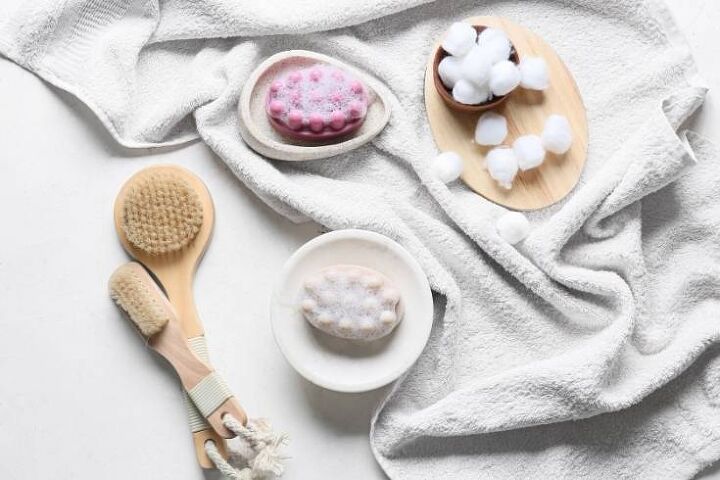
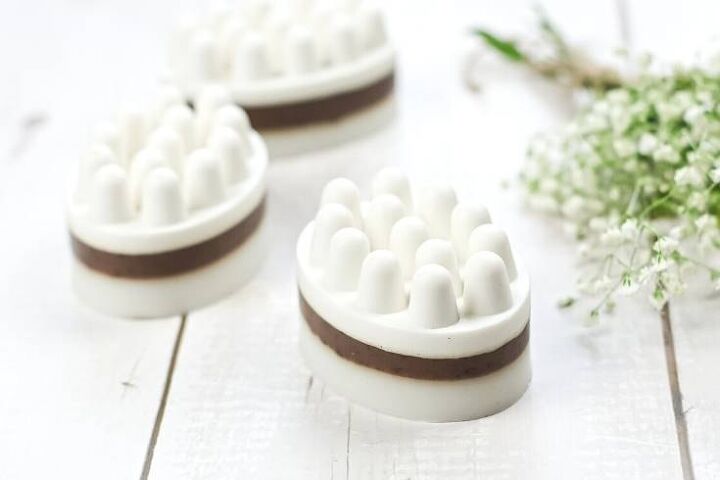









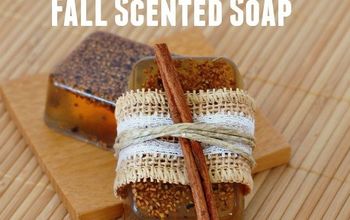
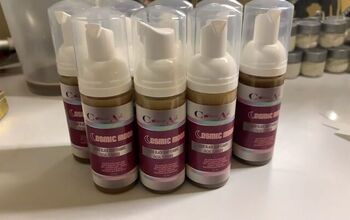



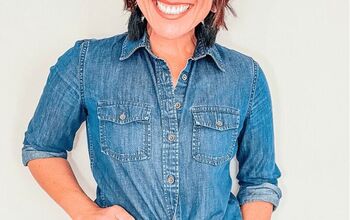
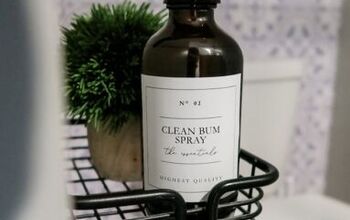



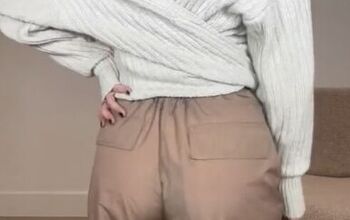
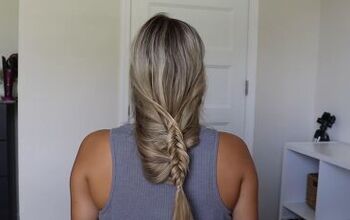
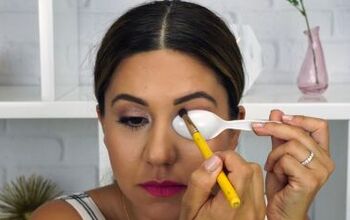
Comments
Join the conversation